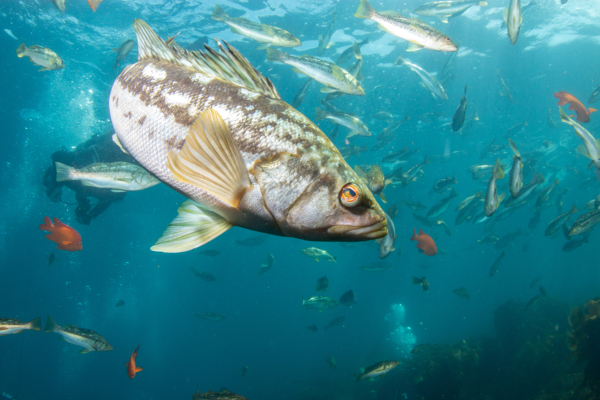In the United States, dichlorodiphenyltrichloroethane (DDT), which had previously been successfully used to combat malaria and typhoid fever but later widely employed as a pesticide, was banned in the 1970s due to its harmful effects on humans and the environment. However, the impact of DDT, which was discharged into the ocean along with industrial waste half a century ago, continues to persist on both humans and the environment.
A recent study published by the Scripps Institution of Oceanography at the University of California—San Diego revealed that 93% of 1,074 fish samples collected from the coastal waters of Southern California between 1998 and 2021 tested positive for DDT, while 75% of 1,275 sediment samples from the seabed also contained DDT.
These DDT residues originated from the now-closed Montrose Chemical Corporation in Torrance, Southern California, once the largest DDT producer in North America. Before the harmful effects of DDT were recognized, the company routinely and legally discharged industrial waste containing residual DDT into the waters off Southern California.
Researchers stated, “For most of the past century in Southern California, large amounts of pesticide waste like DDT were discharged into the ocean through sewage outfalls and permitted ocean disposals.” The study aimed to explore how “historical ocean disposal translates into contemporary coastal pollution.”
Founded in 1947 and closed in 1982, the Montrose Chemical Corporation had settled numerous DDT pollution lawsuits with the U.S. and California by 2000, totaling nearly $140 million, which was used for DDT pollution cleanup projects.
“This is a terrible chapter in our history, treating the ocean as a giant trash can,” Professor David Valentine of the University of California, Santa Barbara’s College of Creative Studies Marine Science Department told Epoch Times. “But now we are much more cautious about what we dump into the ocean, with significantly increased regulations.”
Though researchers found DDT pollution to still be present, they also noted a gradual decrease over time, with the majority of fish caught in Southern California, including Southern California, being safe in terms of DDT content.
The study found that 86% of the fish samples had DDT levels below the safe consumption threshold set by the California Environmental Protection Agency’s Office of Environmental Health Hazard Assessment. However, 3% “exceeded the most stringent consumption threshold,” while the remaining 11% fell into the category of “consumption occasionally.”
The study also revealed a decrease in the “bioavailability” of DDT in seabed sediments, leading to a reduced likelihood of fish being contaminated.
Professor Brice Semmens of the Scripps Institution of Oceanography told Epoch Times that as time passes, new sediment may gradually cover previously contaminated DDT sediment, making it more difficult for fish to come into contact with DDT. Semmens led the laboratory that conducted the study published in the Proceedings of the National Academy of Sciences (PNAS) on October 28.
Semmens mentioned that since DDT contamination has not diffused and remains localized in seabed areas in California, most fish caught in California, including Southern California, are safe.
The most severely contaminated 3% of fish samples originated from the Palos Verdes Shelf off the Los Angeles coast, the dumping site of DDT half a century ago, where the DDT content in seabed sediments was also the highest.
In the past, DDT was found to harm marine animals such as sea lions and the California condor, which feed on fish contaminated with DDT.
Professor Valentine of the University of California, Santa Barbara’s Marine Science Department noted that this new research helps the public understand “what happens when we act without thinking. We thoughtlessly disposed of (DDT) without considering the consequences.”
He also stated, “These chemicals are beneficial to us but can also be harmful. Therefore, discussing this issue is crucial to allow us to adopt a more balanced approach. How should we handle the chemicals we produce? How should we regulate them? These are difficult yet important questions.”
Semmens expressed surprise at the research results, stating, “The distribution of DDT in California’s coastal sediments is very consistent with the previous dumping locations into the ocean.” This contrasts with the common belief that ocean currents would disperse and dilute pollutants entering the sea.
Semmens explained that part of the reason is that DDT is insoluble in water, “but we don’t exactly know why the ocean hasn’t more effectively dispersed these pollutants. It’s an interesting unsolved mystery.”
He noted that some preliminary studies on other toxins and metals have shown similar trends but require more data to draw conclusions.
“From a global perspective, this study tells us that the ocean cannot indefinitely absorb the pollution, toxins, and negative impacts that we humans bring to it,” Semmens concluded.
DDT was the first synthetic insecticide developed in the 1940s, used to combat malaria, typhoid fever, and other insect-borne human diseases. Swiss chemist Paul Hermann Müller won the Nobel Prize in Physiology or Medicine in 1948 for “discovering that DDT acts as a contact poison against insects, including arthropods, with high efficiency.”
Subsequently, DDT was widely used as a pesticide in agriculture. However, in 1972, the United States Environmental Protection Agency (EPA) banned DDT pesticides due to their negative environmental effects and potential risks to human health.
Today, DDT is classified as a “likely carcinogen” by U.S. and international organizations.
According to the EPA, DDT is highly stable in the environment, decomposes very slowly, and accumulates in fatty tissues.

